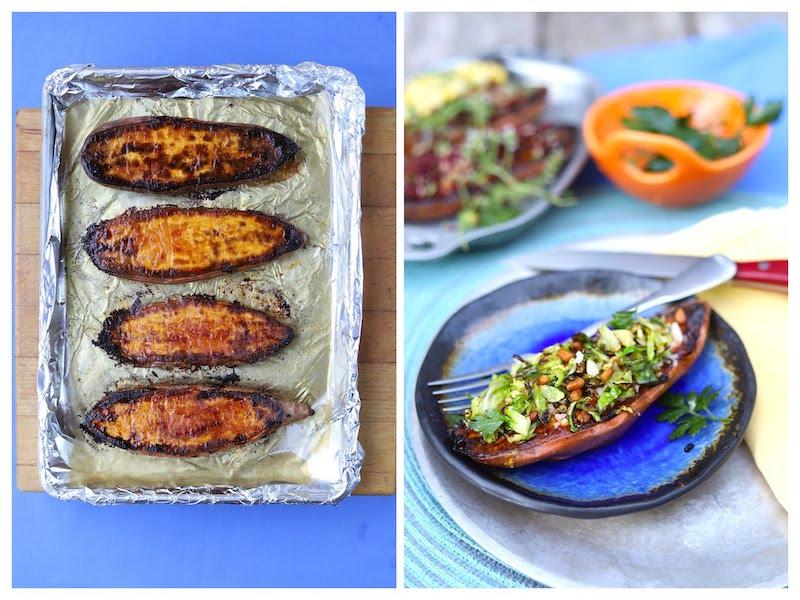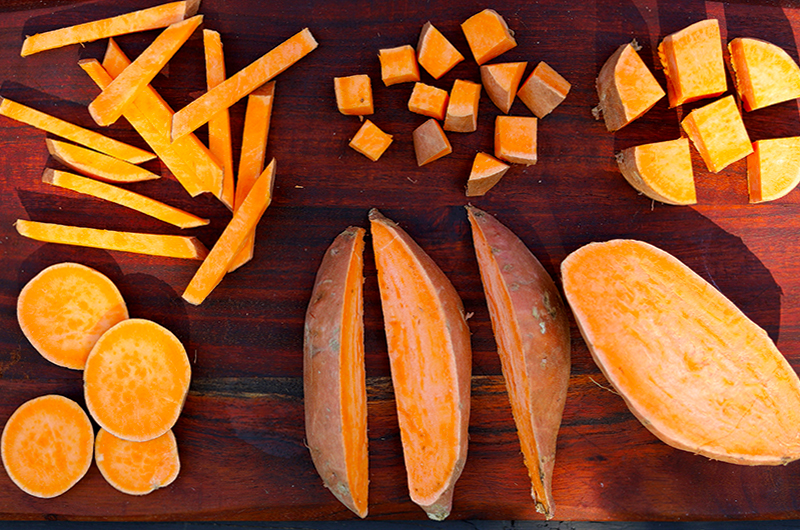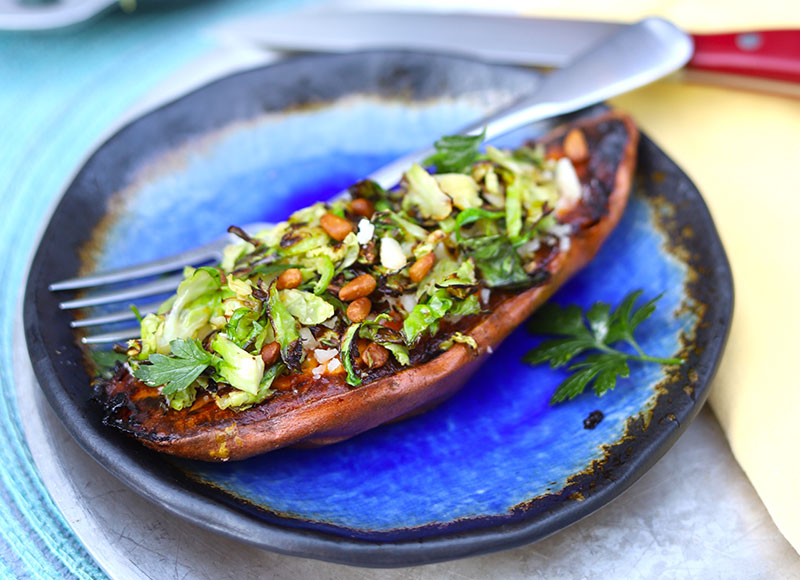I went to the polls to vote and came back with a carton of sweet potatoes. I’m not saying this couldn’t happen anywhere, but you have to wonder. I drove to the fire station, parked between two pick-up trucks, waited in the short line to vote (this was 2020, so everyone was masked up), came back and a woman was standing next to my car with an armful of sweet potatoes the size of footballs. Could it happen somewhere other than West Tisbury, Massachusetts? Maybe.
Turns out I knew the woman (big surprise there – it’s West Tisbury!); I just hadn’t recognized her at first with her mask on. It was gardener Susan Huck, who works up at Laurie David’s Wise Owl Farm in Chilmark.
Susan reached into her truck and pulled out a couple more sweet potatoes, handing them to me as I readily accepted her offer to take some home. She told me that they were growing thousands of sweet potatoes up at the farm and donating most of them to Island schools.
I love sweet potatoes, so I tried not to feel guilty about potentially taking food out of the mouths of children. (She assured me there were plenty.) Home I went to make sweet potato fries, curried sweet potato soup, spiced roasted sweet potatoes, and more. I soon found out sweet potatoes are terrific for calming jangling nerves while awaiting election returns.
Fast forward to this fall and I found myself wondering if Wise Owl Farm is still sweet potato central. I decided to check in with Laurie David, who told me they are still planting about 2,000 slips a year, each of which yields about five to six pounds of sweet potatoes. And they donate the bulk of them to Island Grown Initiative for use in the schools and the Island Food Pantry.
If sweet potatoes were to have a calling, that would be it: to feed year-round Islanders. Because they don’t mature early enough to be marketed to the huge seasonal crowds – and they take up a lot of valuable growing space – sweet potatoes are not a big commercial crop on the Island. Certainly some farms grow them and many backyard growers with space do too. But they don’t get the love they apparently got many years ago on the Island.
My colleague at the Vineyard Gazette, Thomas Humphrey, went poking through the paper’s archives recently and discovered letters from Henry L. Whiting, one of the founders of the Martha’s Vineyard Agricultural Society, extolling the virtues of growing sweet potatoes on the Vineyard. In Humphrey’s Farm and Field column in the Gazette, he noted Whiting’s enthusiasm in a letter from 1857:
“I do not hesitate to say,” Whiting wrote, “that I believe our soil is suitable, and our climate and season sufficiently warm and long, to bring the sweet potato to a very fair degree of perfection.”
Having grown sixteen bushels of the crop himself on a small plot of land, Whiting offered his opinion that it would be easy for an Island farmer to “supply himself with an abundance of this excellent vegetable.”
Only a year later, in 1858, Whiting wrote to the Gazette again to praise the sweet potatoes at the agricultural fair, which at that time coincided with the true harvest season in November. (He noted David Mayhew’s handsome prize winners in particular.)
So listen, if you are the homesteading sort, remember to order sweet potato slips (rooted sprouts) this winter. They usually ship out to our area in early June, so you’ve got plenty of time to clear a spot for them! You can do your part to bring back the great era of the Island sweet potato.

For my part, I’ve been doing my best here on cookthevineyard to encourage people to cook with sweet potatoes more. By now everyone probably knows that this vegetable is a nutritional powerhouse. That double-edged sword means you need to know even more ways to cook it so that you can eat it frequently without tiring of it.
I’ve found that a good way to jump off in new directions with sweet potatoes is to cut or slice them into a different size or shape. For a while I was obsessed with sweet potato fries; I’d cut the sweet potato into diagonal slabs and then cut the slabs into sticks. Those fries were (and still are) delicious simply roasted in a hot oven, but these days you could use the air-fryer option. Then I moved on to sweet potato wedges, coated in spices and cooked in an enameled cast iron pan so that the cut sides caramelized. Along the way I quick-roasted small dice to use in warm salads, slow-sautéed medium dice with apples and onions, and layered round slices into creamy gratins.
Now I’m all about sweet potato halves. To me, this is the evolution of the whole baked sweet potato. Why wouldn’t you roast halves instead of a whole sweet potato if the cooking time is shorter, you still get an abundance of that nice creamy flesh (and tasty skin if you like it), and you also get a bonus: super-flavorful caramelization on the cut side? By roasting sweet potato halves cut-side down, the bottom side gets the benefit of the direct heat from the baking sheet, producing that deep, dark color and flavor. Roasting cut-side down also creates a seal that traps the moisture that cooks the sweet potato through. If you were to roast cut-side up, you would have a slightly drier potato and less caramelization.
(Note: there are dozens of sweet potato varieties on the market, most unfortunately unlabeled, so you will come across some that are drier than others. All benefit from roasting cut-side down.)
On a busy weeknight, this easy side dish needs nothing more than butter, salt, and maybe a squeeze of lime. But to gussy these sweet potato halves up, either for a crowd or to turn them into a more substantial part of a veggie-centered meal, I make a topping. In the recipe that follows, I’ve given you some suggested toppings, most of which begin with a small amount of a favorite vegetable such as shallots, corn (until it’s gone), or Brussels sprouts, sautéed lightly. Aromatics such as ginger and garlic, nuts, fresh herbs, and occasional ringers like toasted coconut or crystallized ginger go into the mix. Before I put the topping on, I score the roasted sweet potato halves and brush with melted butter infused with citrus zest. And I try not to overwhelm the sweet potato with the topping.
I hope this idea helps you become a sweet potato convert if you’re not already. Now when you run into me at the West Tisbury post office, I want to hear about your sweet potato experiments. And if you do happen to grow them and have extras, remember you can always donate some to the Island Food Pantry.




 2 comments
2 comments



Comments (2)